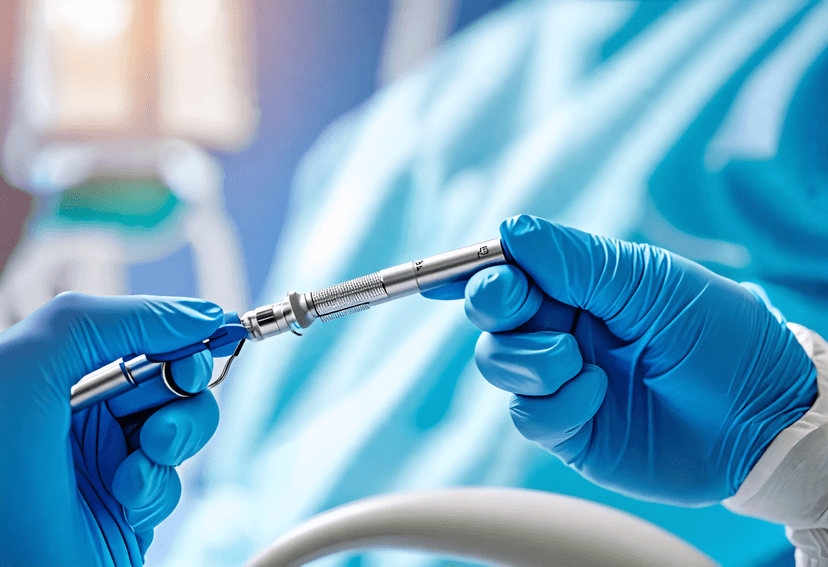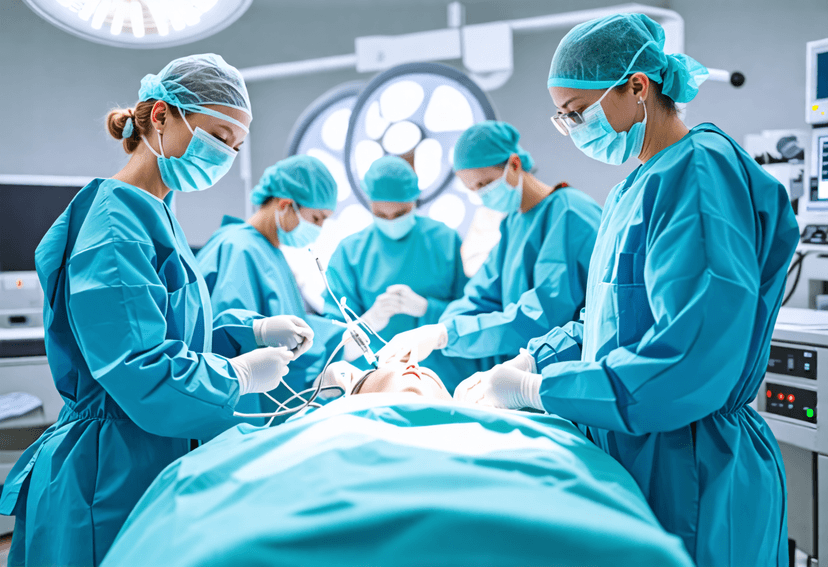
What to Expect When You're Expecting...a Breast Cyst Diagnosis
21 Sep, 2023
 Healthtrip
HealthtripBreast health is a critical aspect of overall well-being for women. While many breast conditions are benign, it's essential to diagnose and understand them accurately. Breast cysts are one such common condition that can cause concern. In this blog post, we will explore what breast cysts are, their symptoms, and, most importantly, what to expect during diagnostic tests.
1. Understanding Breast Cysts
Breast cysts are fluid-filled sacs that can develop in breast tissue. They are relatively common and can affect women of any age, though they are most common in women aged 30 to 60. Breast cysts can be solitary or multiple and may vary in size. These cysts can cause breast discomfort, tenderness, and pain, which often leads women to seek medical evaluation.
Most popular procedures in India
2. Symptoms of Breast Cysts
- Breast Pain: Many women with breast cysts experience breast pain or tenderness, which can range from mild to severe.
- Lump: Sometimes, a breast cyst can be felt as a lump in the breast. These lumps are usually round and may be smooth or slightly movable.
- Changes in Breast Texture: The affected breast may feel different in texture compared to the unaffected breast.
- Swelling and Fullness: Cysts can cause the breast to feel swollen or fuller than usual.
- Changes in Size: Breast cysts can change in size over time, potentially increasing or decreasing in size.
3. Diagnosing Breast Cysts
If you notice any of the symptoms mentioned above, it's essential to consult a healthcare provider. The diagnosis of breast cysts typically involves a series of tests and examinations, including:
- Clinical Breast Examination (CBE): Your healthcare provider will begin by performing a physical examination of your breasts. During this exam, they will assess the size and texture of the lump and check for any changes in the surrounding tissue.
- Mammogram: A mammogram is a specialized X-ray of the breast tissue. It can help identify if the lump is a cyst or if additional imaging or tests are needed. Cysts often appear as smooth, round, or oval areas on a mammogram.
- Breast Ultrasound: If a cyst is suspected, a breast ultrasound is typically performed. This non-invasive imaging technique uses sound waves to create images of the breast tissue, allowing the healthcare provider to confirm the presence of a cyst and evaluate its size and characteristics.
- Fine Needle Aspiration (FNA): If the ultrasound indicates the presence of a cyst, your doctor may recommend a fine needle aspiration. During this procedure, a thin, hollow needle is used to drain the fluid from the cyst. This not only confirms the diagnosis but also often provides relief from pain and discomfort.
- Biopsy (if necessary): In some cases, a biopsy may be recommended to rule out any other underlying conditions. A small tissue sample is taken for laboratory analysis to ensure there are no cancerous cells present.
4. What to Expect During Tests?
The diagnostic tests for breast cysts are generally well-tolerated and relatively painless. Here's what you can expect during each:
Wellness Treatments
Give yourself the time to relax
Lowest Prices Guaranteed!

Lowest Prices Guaranteed!
- Clinical Breast Examination: This is similar to a routine breast examination and should not cause any discomfort.
- Mammogram: During a mammogram, your breast will be compressed between two plates for a few seconds. While this can be uncomfortable, it's necessary for obtaining clear images.
- Breast Ultrasound: This is a painless procedure involving the application of a gel on the breast, followed by the use of a handheld device to capture images.Fine Needle Aspiration: A local anesthetic may be used to numb the area around the cyst. You may feel a slight pinch or pressure as the needle is inserted, but it's usually well-tolerated.
5. Managing Breast Cysts
Once a breast cyst is diagnosed, your healthcare provider will discuss the appropriate management plan with you. Here are some common strategies:
- Observation: If the cyst is small and not causing significant discomfort, your doctor may recommend a "wait and watch" approach. You'll be asked to monitor the cyst for changes in size or symptoms.
- Fine Needle Aspiration (FNA): If the cyst is painful or causing discomfort, or if it's difficult to determine whether it's a cyst or a solid mass, your doctor may perform an FNA to drain the fluid. This procedure is often therapeutic as it relieves pain and discomfort.
- Hormonal Therapy: In some cases, your healthcare provider may prescribe hormonal therapy, such as birth control pills, to help prevent new cysts from forming. This approach may be suitable for recurrent cysts.
- Surgery: Surgical removal of a breast cyst is rare but may be considered if the cyst is large, painful, complex, or if there are concerns about malignancy. The surgical procedure is called cystectomy and typically involves the removal of the cyst while preserving the surrounding breast tissue.
- Regular Follow-Up: Regardless of the chosen management plan, regular follow-up appointments with your healthcare provider are essential to monitor any changes in the cyst or your breast health. These appointments will help ensure early detection and intervention if necessary.
6. Breast Cysts and Breast Cancer
It's crucial to note that breast cysts are typically benign, meaning they are not cancerous. However, it's essential not to ignore any breast changes or assume that a lump is a cyst without proper medical evaluation. Breast cancer can also present with lumps and changes in breast tissue.
- Breast Cysts:
- Breast cysts are fluid-filled sacs that can develop in breast tissue.
- They are usually benign (non-cancerous) and can cause breast pain and tenderness.
- Symptoms may include a palpable lump, changes in breast texture, swelling, and variable cyst size.
- Breast Cancer:
- Breast cancer is characterized by the uncontrolled growth of malignant cells in breast tissue.
- Symptoms can include a breast lump, changes in breast size or shape, nipple discharge, and skin changes.
- Breast cancer is a serious health concern and one of the leading causes of cancer-related deaths among women.
- Relationship Between the Two:
- Having breast cysts does not increase the risk of developing breast cancer.
- However, it is possible to have both breast cysts and breast cancer simultaneously.
- Breast cysts can sometimes make it more challenging to detect breast cancer, especially on mammograms.
- Early Detection is Key:
- Regular breast health checks, including self-exams and mammograms, are crucial for early detection and appropriate management of both breast cysts and breast cancer.
- Any unusual breast changes should prompt consultation with a healthcare professional.
- Vigilance and Knowledge:
- Understanding the distinction between breast cysts and breast cancer empowers individuals to take charge of their breast health.
- Knowledge and proactive monitoring play vital roles in preserving breast health and reducing the impact of breast cancer.
7. Maintaining Breast Health
To maintain breast health and reduce the risk of developing breast cysts or other breast conditions, consider the following:
- Regular Self-Examinations: Perform monthly breast self-examinations to become familiar with the normal look and feel of your breasts. This can help you detect any changes early.
- Clinical Breast Examinations: Schedule regular clinical breast examinations with your healthcare provider as part of your preventive care routine.
- Mammograms: Follow the recommended guidelines for mammograms based on your age and risk factors. Mammography is a powerful tool for early detection of breast abnormalities.
- Healthy Lifestyle: Maintain a healthy lifestyle with a balanced diet, regular exercise, limited alcohol consumption, and avoidance of smoking. These factors can contribute to overall breast health.
Conclusion
Diagnosing breast cysts involves a series of tests and examinations to ensure an accurate diagnosis and appropriate management. While breast cysts are usually benign and treatable, it's crucial not to self-diagnose or ignore any breast changes. Seeking prompt medical attention and following the recommended screening guidelines are essential steps in maintaining breast health and ensuring the best possible outcomes. Remember, early detection and timely intervention are your allies in maintaining breast health and overall well-being.
Related Blogs

Birthright: Empowering Women's Health and Wellness
Discover comprehensive healthcare services for women at Birthright, a renowned

Laparoscopic Hysteroscopy: A Minimally Invasive Diagnostic Tool
Explore the benefits of laparoscopic hysteroscopy, a minimally invasive diagnostic

Laparoscopic Hysterectomy: A New Era in Women's Health
Explore the benefits of laparoscopic hysterectomy, a minimally invasive surgical

Embracing Wholeness: A Journey to Women's Holistic Health
Discover the power of holistic health for women

Women's Health and Wellness Trends
The latest trends in women's holistic health and wellness

Mindfulness and Meditation for Women
The benefits of mindfulness and meditation for women's holistic health










